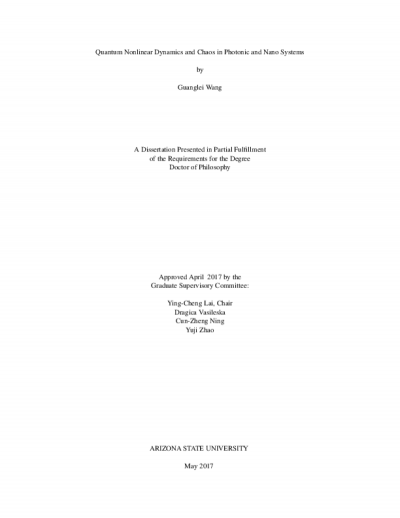A Study of Hole Transport in Crystalline Monoclinic Selenium Using Bulk Monte Carlo Techniques

Description
Amorphous materials can be uniformly deposited over a large area at lower cost compared to crystalline semiconductors (Silicon or Germanium). This property along with its high resistivity and wide band-gap found many applications in devices like rectifiers, xerography, xero-radiography, ultrahigh sensitivity optical cameras, digital radiography, and mammography (2D and 3D tomosynthesis). Amorphous selenium is the only amorphous material that undergoes impact ionization where only holes avalanche at high electric fields. This leads to a small excess noise factor which is a very important performance comparison matrix for avalanche photodetectors. Thus, there is a need to model high field avalanche process in amorphous selenium. At high fields, the transport in amorphous selenium changes from low values of activated trap-limited drift mobility to higher values of band transport mobility, via extended states. When the transport shifts from activated mobility with a high degree of localization to extended state band transport, the wavefunction of the amorphous material resembles that of its crystalline counterpart. To that effect, crystalline monoclinic selenium which has the closest resemblance to vapor deposited amorphous selenium has been studied. Modelling a crystalline semiconductor makes calculations simpler. The transport phenomena in crystalline monoclinic selenium is studied by using a bulk Monte Carlo technique to solve the semi-classical Boltzman Transport equation and thus calculate vital electrical parameters like mobility, critical field and mobility variations against temperatures. The band structure and the density of states function for monoclinic selenium was obtained by using an atomistic simulation tool, the Atomistic Toolkit in the Virtual Nano Lab, Quantum Wise, Copenhagen, Denmark. Moreover, the velocity and energy against time characteristics have been simulated for a wide range of electric fields (1-1000 $\frac{kV}{cm}$), which is further used to find the hole drift mobility. The low field mobility is obtained from the slope of the velocity vs. electric field plot. The low field hole mobility was calculated to be 5.51 $\frac{cm^{2}}{Vs}$ at room temperature. The experimental value for low field hole mobility is 7.29 $\frac{cm^{2}}{Vs}$. The energy versus electric field simulation at high fields is used to match the experimental onset of avalanche (754 $\frac{kV}{cm}$) for an ionization threshold energy of 2.1 eV. The Arrhenius plot for mobility against temperature is simulated and compared with published experimental data. The experimental and simulation results show a close match, thus validating the study.
Date Created
The date the item was original created (prior to any relationship with the ASU Digital Repositories.)
2017
Agent
- Author (aut): Mukherjee, Atreyo
- Thesis advisor (ths): Vasileska, Dragica
- Thesis advisor (ths): Goldan, Amirhossein
- Committee member: Goodnick, Stephen
- Publisher (pbl): Arizona State University








